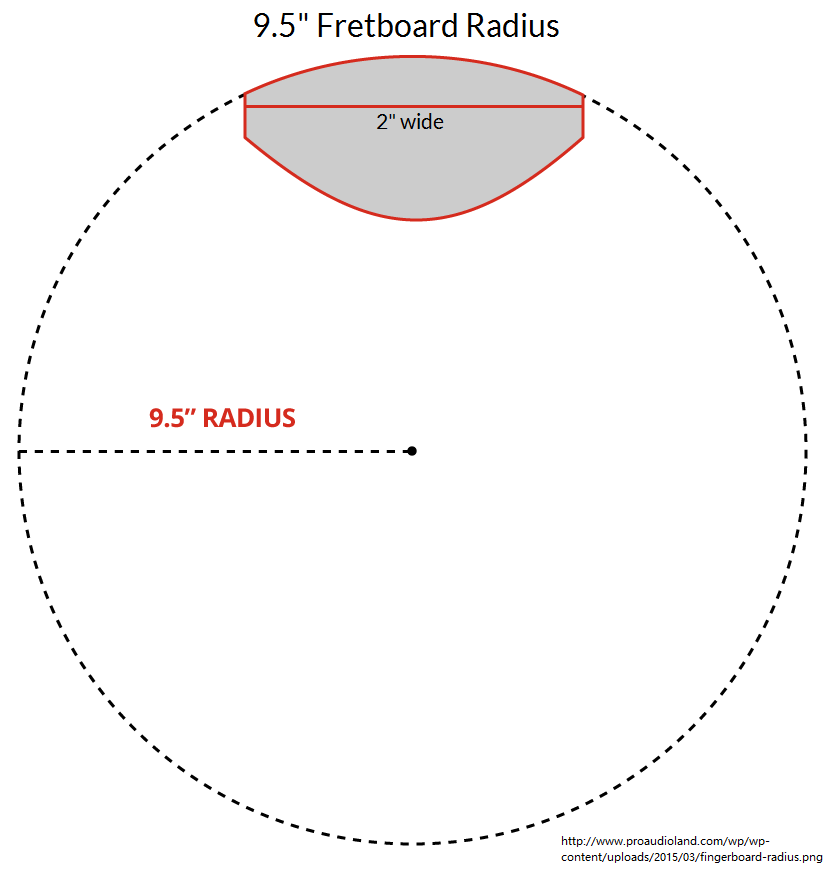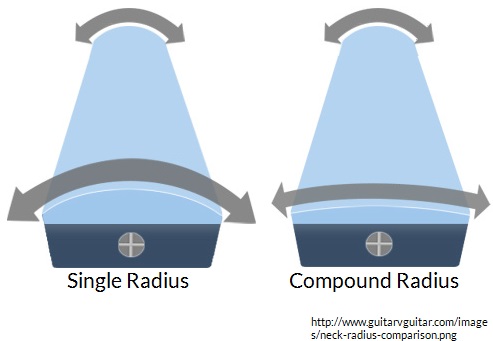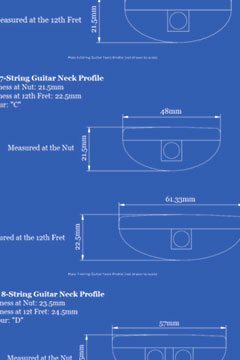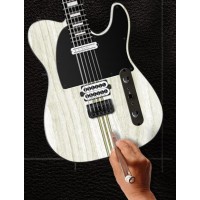Custom and compound radius options are now available in the Guitar Customization Tool!
For more on our standard fretboard radiuses (radii) and neck profiles, see this article from the Halo Blog.
The Halo Custom Shop's goal is to build custom guitars exactly the way our customers want them. Offering these new fretboard radius options is just another way for us to get closer to that goal.
To help you decide what fretboard radius is right for you, I'll quickly review 4 things in this article:
- What is the fretboard radius?
- What is a compound radius?
- What are some common fretboard radiuses (radii)?
- Does it affect the price?
There is a ton of great information on the web about a guitar's fretboard radius, so I'll just be picking and choosing from some of those sources to help answer the questions above.
What Is The Fretboard Radius?
The fretboard radius refers to the curvature of the surface of the fretboard and can be measured in inches or millimeters. The smaller the radius, the more curved the fretboard; the larger the radius, the less curved (flatter) the fretboard. To help understand the fretboard radius measurements a bit more, here's what Andy from Pro Guitar Shop had to say in his article from 2010:
"A common Fender radius like 9.5” refers to the arc of a circle with a distance of 9.5” from the center to the outer edge. You can do this right now by taking a pencil attached to a string (cut to... 9 ½”... length). Tack the loose end of the string to a surface and draw a perfect circle. Now, if you were to cut out a segment of the circle approximately 2 inches wide, that’s the exact curve of the fretboard!"

What Is A Compound Radius?
Allow me to borrow from this concise explanation from a 2006 Sweetwater article:
"A compound radius neck has a smaller (rounder) radius at the nut, and a larger (flatter) radius at the neck and body joint. As the... fretboard gets flatter... (it) is said to be an aid when soloing, especially when bending strings. The compound radius accomplishes this with a continuously flattening shape beginning with, for example, a 7.5-inch “vintage Fender” radius at the string nut and flattening to a 12-inch “Gibson” radius at the highest fret. A luthier named Denny Rauen began “multi-radiusing” fingerboards as early as 1978. Other luthiers and manufacturers followed suit. Today, most compound radius fingerboards use continuously varying fretboard radiuses drawn from a conical shape, retaining a tighter radius in the lower fingerboard area commonly used for rhythm and chording, while flattening the upper fretboard area often used for string bending and lead playing."

What are some common fretboard radiuses (radii)?
This table was adapted from the Thalia Capos' website.
NOTE: This data has been collected from a wide range of sources and has not been completely verified for accuracy.
| Manufacturer/Brand | Radius | Model |
| Halo Custom Guitars | 400mm (approx. 16") | Most 6-string guitars |
| Gibson | 10" - 12" | Most |
| Yamaha | 16" | Most |
| Classical Guitars | Flat | Most classical guitars |
| Jackson | 16" | Most |
| PRS | 10" - 11.5" | Most |
| Fender | 9.5" | Modern |
| Fender | 7.25" | Vintage |
| Ibanez | 15.75" - 17" | RG, S Series |
Hope this helps!

Anatomy of a Halo Guitar Neck
Your email address cannot be published. Required fields are marked*



No comments